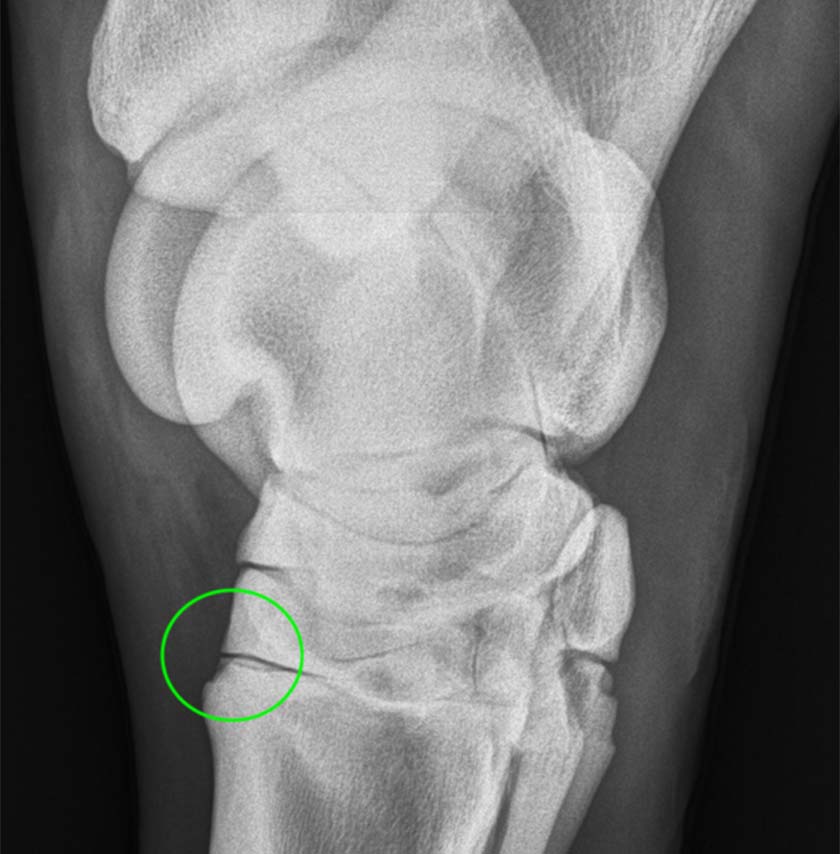The latest treatment for hock joint pain and lameness in horses now includes the use of 2.5% PAAG Arthramid Vet.
The next in our series of case reports is a 12-year-old Warmblood gelding called Devon that was competing at level 5 dressage. Over the space of three months his ability to perform flying changes to the left significantly reduced and his willingness to conduct upwards, transitions deteriorated.
Joint Lameness:
Physical examination found the horse to be 3/5 lame in the left hind leg, which was isolated to the tarsometatarsal (lower hock) joint with diagnostic analgesia. Radiographs were taken and found there to be mild osteoarthritic change on the front of the tarsometatarsal joint, with there being a reduction in bone density and slight spur development, which is shown in the image attached within the green circle.
Treatment and Outcome:
1ml of Arthramid® Vet was injected into the joint and the horse was then rested for 48 hours before commencing an ascending exercise program over two weeks to return to a full exercise regime. Over the space of four weeks, the clinical signs dissipated with the horse willingly and comfortably able to perform all movements asked of it. Devon was injected eight months previously and continues to show no recurrence of clinical signs of pain and has one delighted owner as a result.
